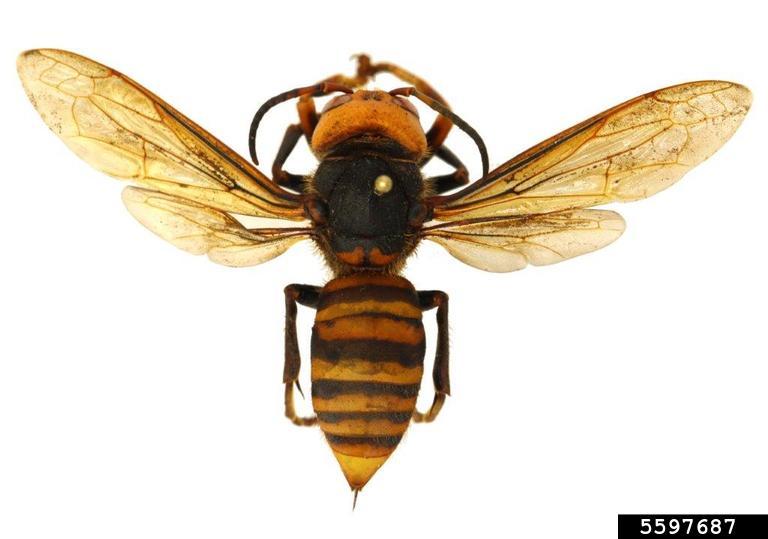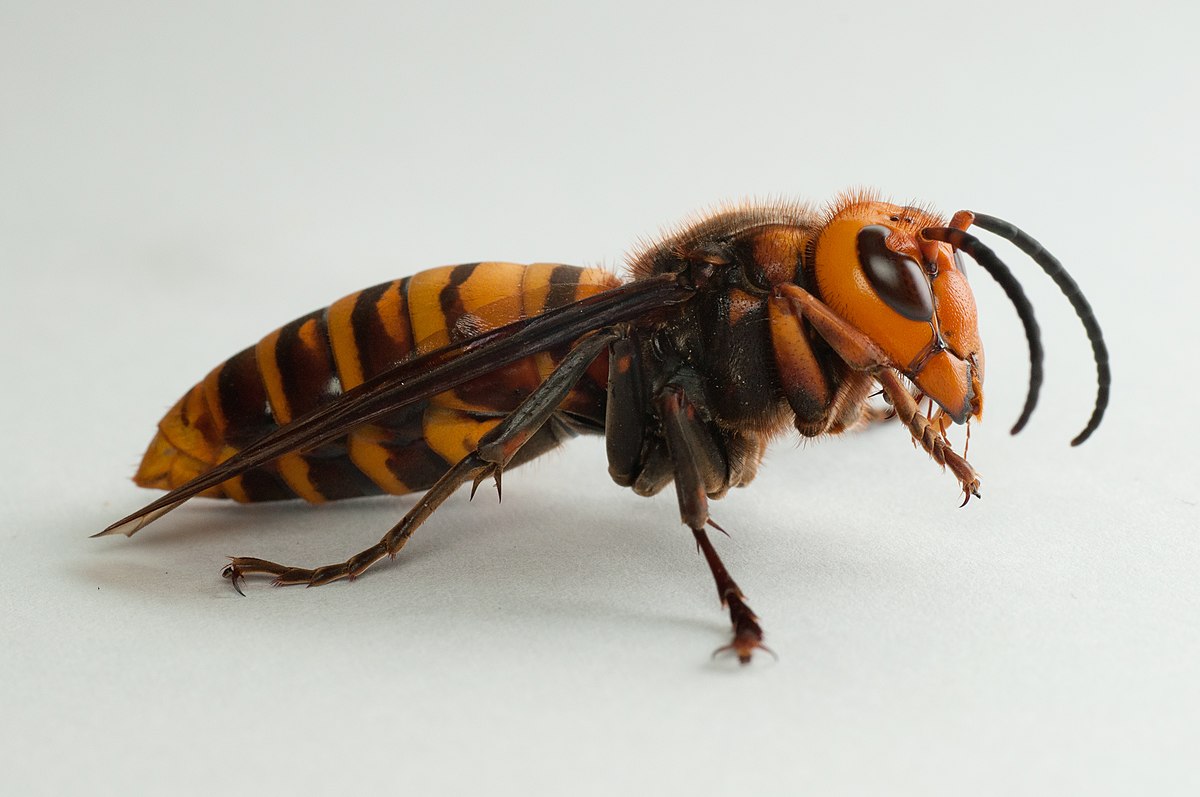Asian Giant Hornet

Asian Giant Hornet
(Vespa mandarinia)
Tags: Terrestrial | EDRR
Identification and Reproduction
Identification:
- The Asian giant hornet is the world's largest hornet, with noticeably large orange heads and black eyes.
- Queens can be up to 4 cm to 5 cm in length with a wingspan of 4 cm to 7 cm.
- Male and female worker hornets are approximately 3.5 cm in length.
- Other than size the colouration between the queen and workers is the same. The broad head is a light orange, antennae are brown, thorax is mainly black with a orange-black striped abdomen.
- They have a large orange mandible that has a black tooth that is used for digging.
Reproduction:
- Asian giant hornets mate during the fall.
- Unlike other hornets, copulation takes place at nest entrances.
- Sex pheromones are also used to initiate male sexual behavior.
- Once a queen exits the nest, a male will seize her in mid-air, causing both of them to fall to the ground.
- Copulation continues for 8 to 45 seconds. Following copulation, the queen finds a place to overwinter.
- After overwintering, the fertilized queen will start her colony in the spring. The initial clutch is around 40 eggs, which will develop into the first generation of workers.
Habitat & Ecology
- They are typically found in low mountains and forested areas.
- Asian giant hornets are absent in plains and higher elevations.
- Their nests are often underground, created from digging, co-opting cavities dug from small rodents, or using ares near rotting pine roots.
- At times they will build nests in hollow tree trunks or empty tree cavities.
- The depth of their nests ranges between 6 and 60 cm.
- Vespa mandarinia is a primarily insectivorous omnivore.
- Workers take about 40 days to grow from egg to adult form.
- Workers prey mainly on beetles (Coleoptera), but they also will hunt hornworms (Manduca), mantids (Mantodea), and eusocial wasp and bee species.
- Asian giant hornets display a lot of parental investment. They build nests for their young, which the workers will aggressively defend, and young are fed a fine paste of the prey.
Impacts
- The Asian giant hornet is classified as a serious honey bee predator.
- In addition to bees they will consume other adult and larval insects.
- Asian giant hornets hunt insects for food and generally are not interested in humans, pets and livestock.
- When their nest is disturbed, they will attack with painful stings, which can be hazardous to people’s health.
Management
- Learn to identify the Asian giant hornet to ensure you are reporting the correct insect.
- Refrain from unneccessarily killing native bees and wasps.
- Currently not in the Fraser Valley - Report all sightings.
Resources
For more information the United States Department of Agriculture has released their New Pest Response Guidelines for Vespa mandarinia (Asian giant hornet). Note this is an American resource, Canadian guidelines and regulations may differ. Be sure to carefully read pesticide labels prior to application.
Download BC Ministry of Agriculture's Pest Alert: Asian Giant Hornet here.
For more information on the behaviour and impacts of Vespa mandarinia refer to Animal Diversity Web.
The Native Bee Society of British Columbia provides a good Questions and Answers page about the Asian Giant Hornet here.
Header photo (Kenpei).




